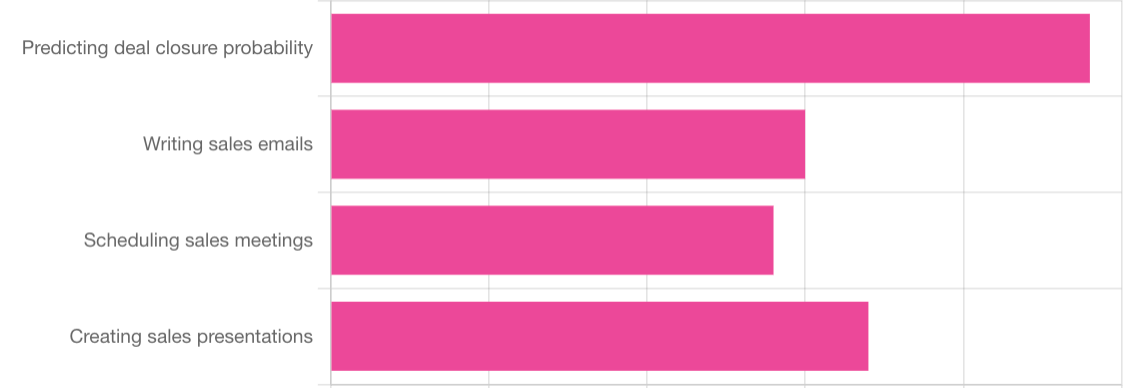{{first_name | Leader}}, welcome back. Today’s updates:
Get more done in less time with Perplexity*
Who are AI browsers really for?
Baidu Inc., WeRide Inc., and Pony AI Inc. push robotaxis globally
AI & automation transform the global supply chain
Tools, resources, and a prompt to identify which deals are most likely to close (or stall) ⬇️
Perplexity gives CMOs, sales heads, and AI leaders a single space to research, plan, and execute. No more jumping across tools or waiting on updates.
With Perplexity, teams can:
Automate market and customer research
Build campaigns and dashboards in minutes
Sync insights across marketing, sales, and ops
Save hours every week on reporting and prep
It’s how big organizations move faster without adding more tools.
Try Perplexity and see the difference.
Who Are AI Browsers Really For?
Every big tech company seems to have an AI browser now - OpenAI’s ChatGPT Atlas, Perplexity’s Comet, The Browser Company’s Dia, Opera’s Neon, and Google’s Gemini-powered Chrome. It’s easy to scroll past the launches and wonder: does anyone actually need another browser?
What stands out
AI-first experience: Unlike extensions or plug-ins, AI browsers build assistants directly into the browsing layer. You can summarize, write, or automate actions without jumping between tabs. Atlas, Comet, and Dia lead this wave with conversational sidebars and agentic tools.
Integrated productivity: Routine tasks (comparing prices, summarizing docs, drafting proposals) now happen automatically. Atlas’s Agent Mode and Neon’s Do system can handle multi-step web actions from start to finish.
Cross-platform continuity: Gemini in Chrome and Copilot in Edge maintain AI context across devices, enabling teams and enterprises to stay synced.
Personalized context: Atlas and Dia remember what you’ve been doing, which makes them powerful for knowledge workers juggling research, content, or client projects.
Ecosystem maturity: What’s changing is intent - these browsers aren’t chasing novelty; they’re building toward an AI-native workspace.
Things to keep in mind
Switching cost: Most people won’t move away from Chrome or Safari unless the advantage is obvious. Adoption will start with creators, analysts, and teams already using AI daily.
Privacy and control: Memory and personalization raise fair questions about data handling. Some, like Atlas, prioritize consent and local storage, but trust will take time.
Fragmentation: Every browser defines “AI integration” differently, and standards for governance and security are still forming.
The shift to AI browsers isn’t about replacing Chrome tomorrow - it’s about rethinking what the browser does for people who spend hours online. For researchers, marketers, and builders, this isn’t hype; it’s the start of a new rhythm for how we browse, work, and think.
In other news
Chinese companies Baidu, WeRide, and Pony AI are rolling out fully driverless taxi services across Asia, the Middle East, and Europe. Their expansion shows how AI mobility is moving beyond pilots into large-scale transportation and logistics systems.
AI-driven automation is transforming logistics at major hubs like the Port of Los Angeles, optimizing cargo flow and reducing operational costs. These advances show how AI is strengthening global supply chain efficiency and resilience across industries.
Useful Resources
Read how to survive an “AI cold snap” even if we’re not in an AI winter.
Explore AI tools that new businesses can adopt to jump-start growth and operations.
A Reddit thread shows how AI “just hosted the human vs animal Olympics.”
Master effective communication skills with ten practical techniques for teams using tools like Slack.
Learn how to build, train, and compare multiple reinforcement-learning agents in a custom trading environment.
Get featured tomorrow: How do you use AI for business/personally? Interesting stories will be shared with 100K curious readers.
Productivity Tools

Perplexity Comet: Research markets, draft briefs, and automate updates directly from the page you’re viewing.*

Scale Donovan – A Decision intelligence platform that helps teams plan and act in minutes.

EmailTree – Automates replies using internal knowledge bases for faster customer response.

Waxwing 2.0 – Human-assisted AI marketplace that combines automation speed with human judgment.
What AI browser feature excites you most?
💰 Funding
Sage Care raised $20M to deploy AI-based care-navigation systems in healthcare.
Finster AI raised $15M to build an AI-native platform for financial intelligence in investment banks and asset managers.
💼 Roles in AI
🐦 How LLMs work!
Pipeline Intelligence Assistant
When to use this?
When you want to identify which deals are most likely to close (or stall) and how to focus your team’s time for maximum revenue impact.
You are a Revenue Intelligence Analyst.
Review the pipeline data provided below and identify:
Top opportunities likely to close this quarter (based on deal size, stage, velocity, and engagement).
At-risk deals that need intervention.
Patterns across winning deals (e.g., industry, deal cycle length, lead source).
3 tactical recommendations for the sales and marketing teams.
Present the output as a table:
| Deal Name | Likelihood to Close | Risk Factors | Recommended Action |Correct Input Style:
Here’s a snapshot of our current enterprise pipeline.
Columns: Account Name, Stage, Deal Size, Days in Stage, Source, Engagement Score.”
(Paste the data directly from your CRM export — 10–20 deals max for best results.)
P.S. Get more such prompts in the Prompting Playbook (free for you)
Q. What is the main advantage of using AI in sales pipeline management?

Stay curious, {{first_name | leaders}}
PS. If you missed yesterday’s issue, you can find it here.
